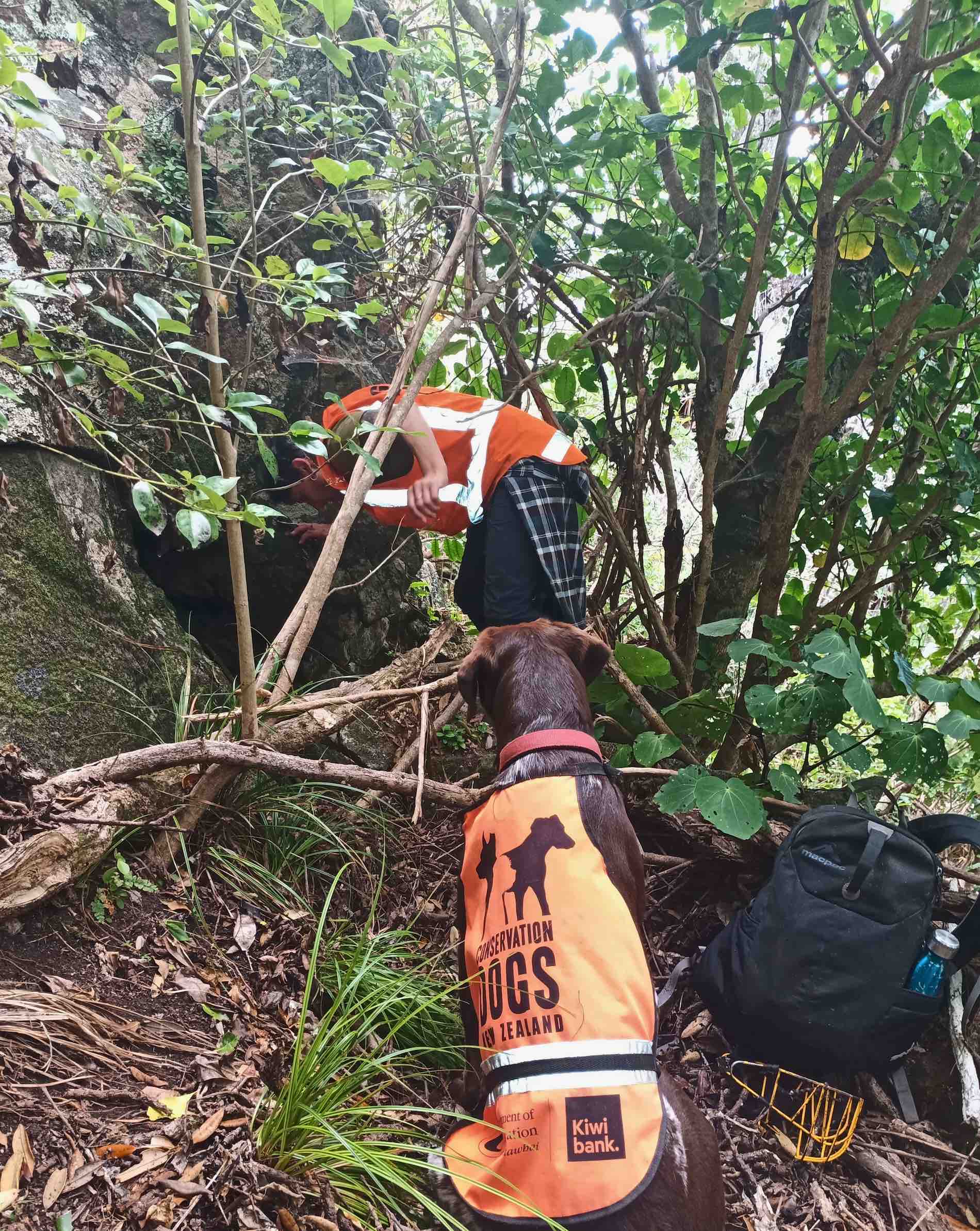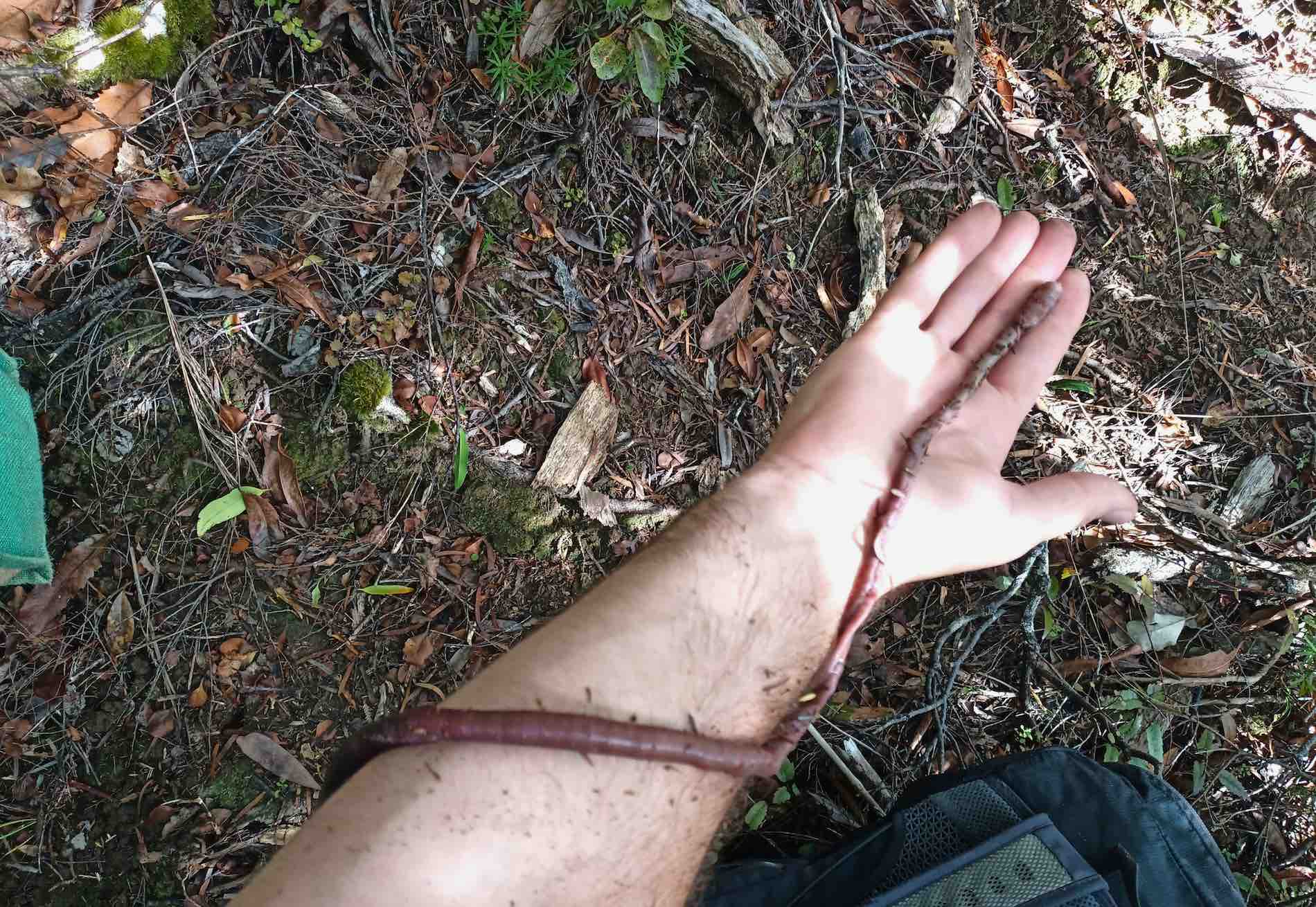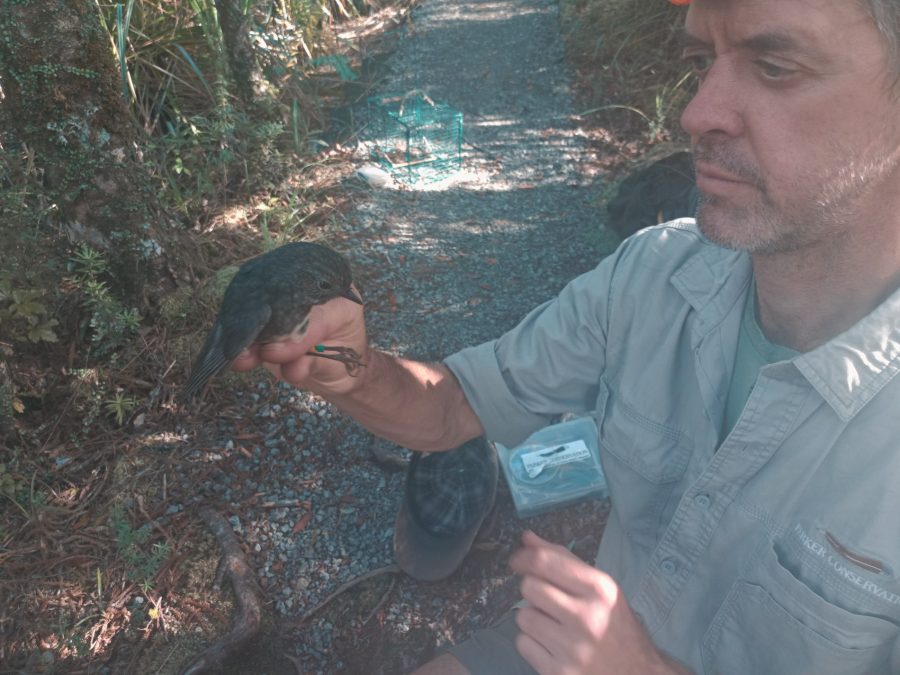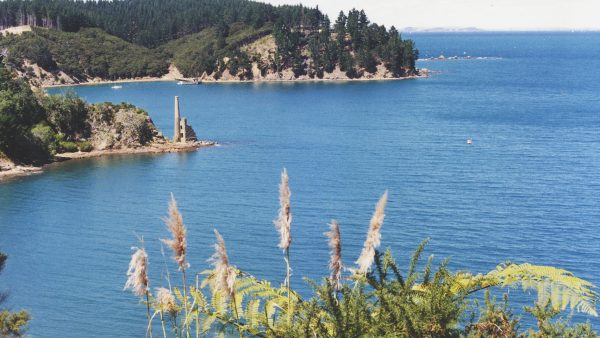Each month, Judy Gilbert, founding Trustee and voluntary manager of the Windy Hill Wildlife Sanctuary, shares a summary of the latest happenings and conservation efforts at the Sanctuary. Stay updated on the sanctuary’s progress and exciting wildlife discoveries with ‘What’s going on up the Hill?’
Above: Kevin Parker Engages in the Delicate Task of Banding a North Island Robin. Photo / Supplied
Monitoring species is one of the more interesting and enjoyable parts of working in the Windy Sanctuary. Our annual monitoring program assists us to know what species are present in the Sanctuary, how well they are faring, and whether we are seeing the benefits from pest management. As part of that program, each year in May and June, lizards and invertebrates are identified and counted inside their lizard ‘motels’ (a stack of bitumen corrugated cardboard), bird counts are carried out, freshwater stream species checked out, and seabird burrows located during the nesting season.

Jo Sim of DabChicks, with her dog Miro, has been a frequent visitor to the Sanctuary over the last decade, surveying for new seabird burrows and checking known ones. This April, Jo and Miro, accompanied by field team member Maxine Barrowman, hit the ‘trifecta’ finding Cooks, Black, and Grey Faced Petrel burrows as well as banding a late Black Petrel chick. Seabirds are vulnerable to predation from feral cats and pigs, and as we maintain the pressure on these pests, we are finding more of these three seabirds present. Video clips from a camera monitoring a Grey Faced petrel burrow over this season showed rats, cats, and pigs all visiting the burrow surrounds—it’s amazing that they survive.

Jo and Miro also surveyed for OME in Medlands, finding 7 new Black Petrel burrows in the Station Rock area, and on the Walker property in Okiwi. Further north, Dr. Kevin Parker returned in April to carry out the third North Island robin banding up on Hirakimata, where a population has established following translocations to the Sanctuary in 2004, 2009, and 2012. Banding birds—fitting tiny, colored bracelets on their legs—allows birds to be identified with a record kept of the banding combinations detailing sex and weight. Ongoing monitoring of the approximately 20-30 birds will show if the population is stable, in decline, or growing. Thanks to funding from the Aotea Great Barrier Local Board, Kevin was able to band 4 birds this season with the assistance of Sanctuary field team member Paul Lee. Four other banded birds were picked up including a bird from the translocation in 2012, an old sage at 12 years +. If you are walking up Hirakimata, these engaging birds may pop out onto the track in front of you—if you can see it has bands, please note the color and combination starting left leg down then right leg down. A record might read Blue, Red (left leg) then Metal Pink (right leg). Each bird has a metal band which is coded.

Few people realize that Aotea is a bit of a hot spot for giant worms. Sanctuary Field manager Jordan Scarlett found the one pictured recently and says that you can hear these critters pulling themselves into their holes when footsteps approach. Sounds like slurping spaghetti! Jordan and the team have also noted the presence of a pair of kakariki—not common visitors to this end of the island. Let’s hope they make the Sanctuary home.







